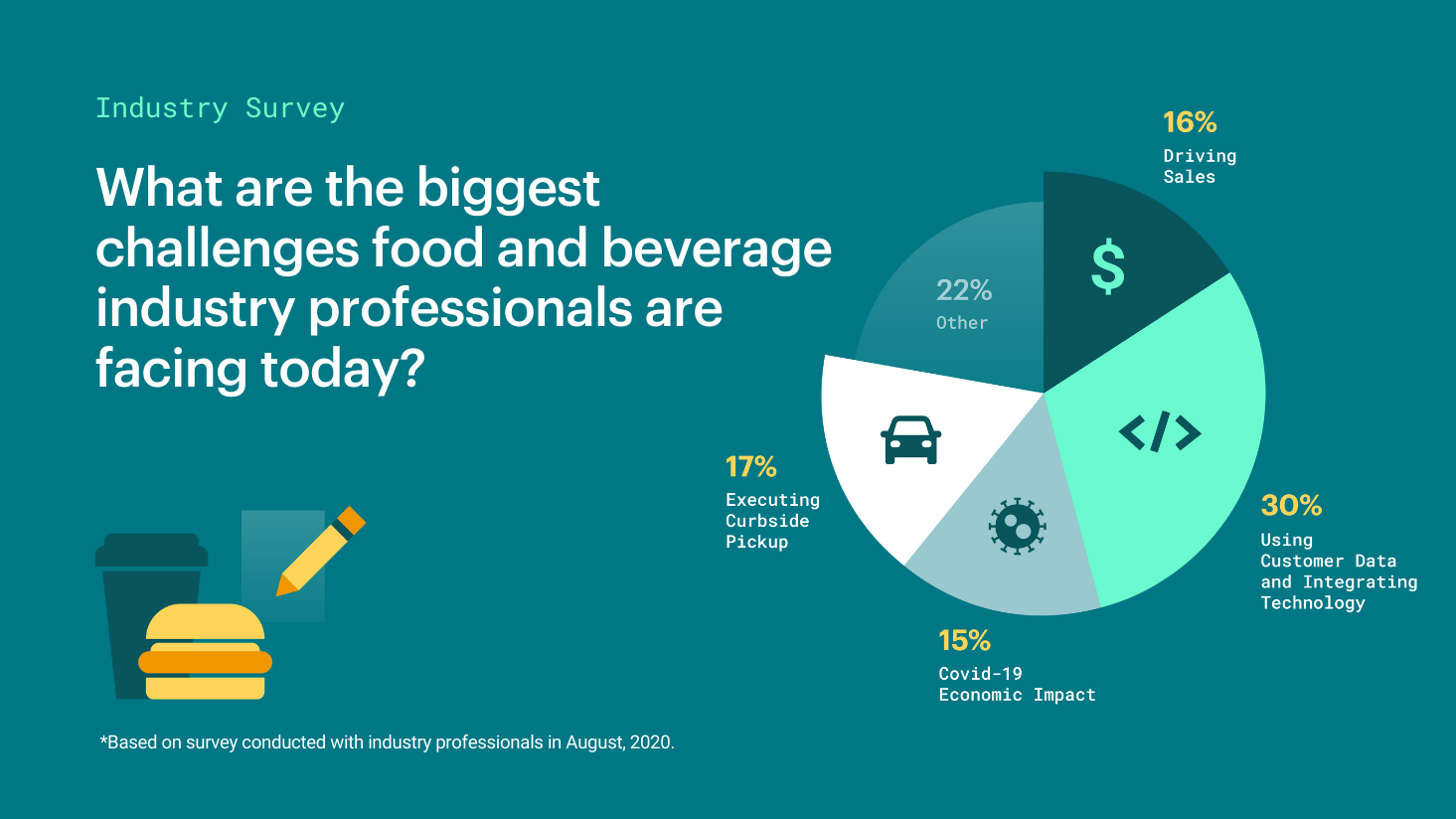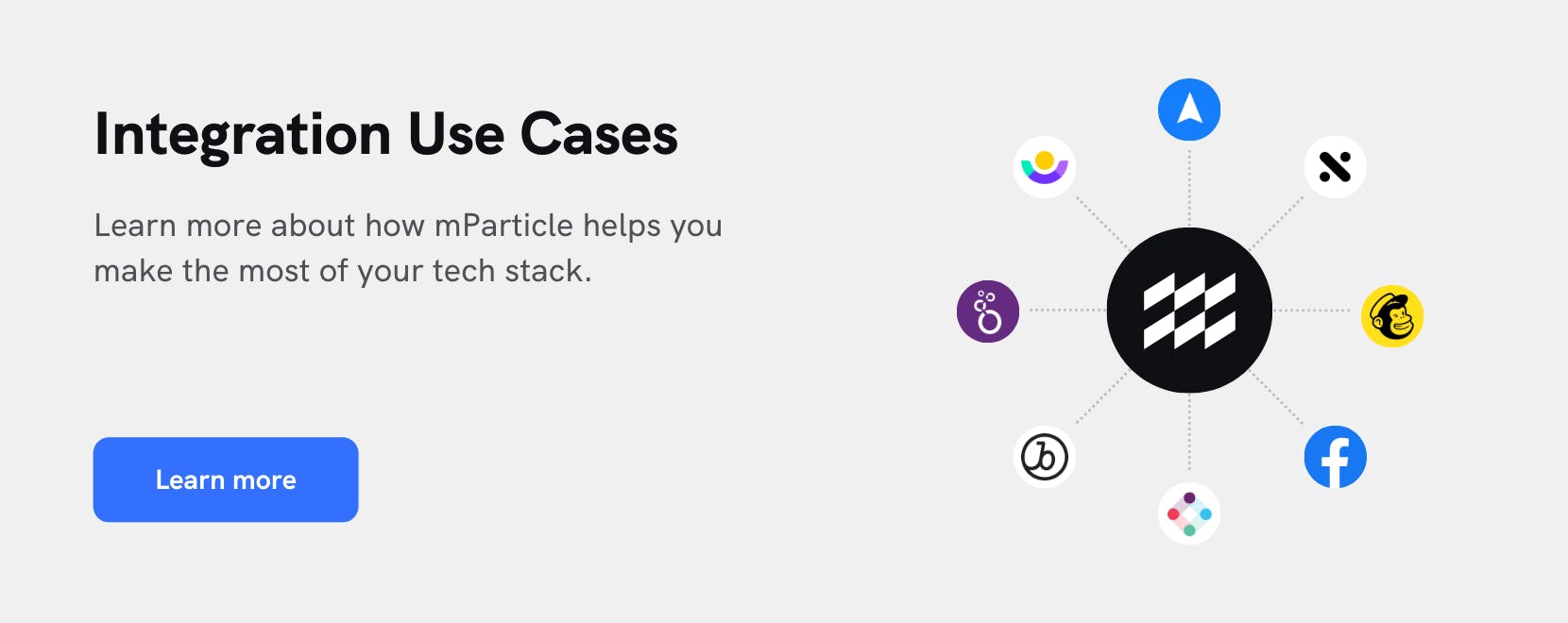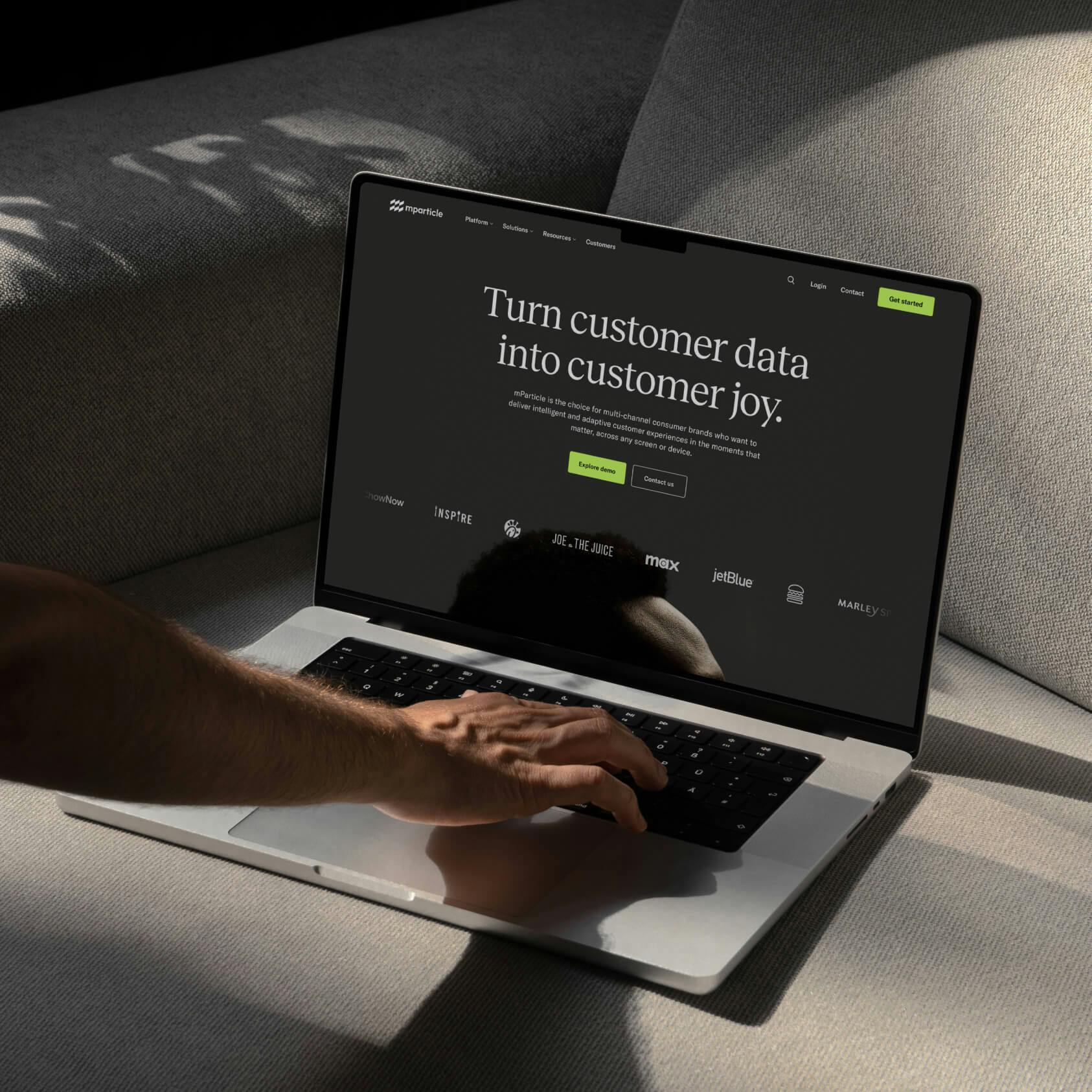What are the 4 biggest challenges food and beverage brands are facing today?
Incorporating digital experiences in the food and beverage customer experience has become critical for success during the COVID-19 pandemic, and it will likely continue to be important in the future. Learn more about the biggest challenges brands are facing, and how some of the industry's leading innovators are adapting.

The food and beverage industry has changed rapidly as a result of the COVID-19 pandemic. Location closures, in-person dining restrictions, and general economic uncertainty have forced brands across the industry to introduce digital dining experience in order to accommodate changing customer needs.
Although select brands had already begun to integrate technology into their existing customer experiences before COVID-19, many hadn’t. The pandemic has functioned as a universal accelerator that has forced all brands to tighten up their digital processes.
To learn more about the current climate, we teamed up with Radar and Hathway and asked professionals from across the industry, “What is the biggest challenge you’re facing today?”
We then hosted three food and beverage industry leaders – Jeffrey Rausch of Shake Shack, Jason Suarez of Dine Brands Global, and Matt Pacyga of Dairy Queen – for an executive panel to learn more about how they’re overcoming the challenges their peers are facing.

1. Driving sales
16% of industry professionals surveyed reported that continuing to drive sales during COVID-19 has been their biggest challenge. With shifting consumer preferences and dining restrictions, maintaining sales volume throughout the pandemic has been incredibly difficult across the industry. The experts noted that the key to maintaining sales has been working to understand how their customer preferences have changed, and doing all they can to adapt the experiences they offer accordingly.
Matt Pacyga at Dairy Queen shared that his team has been focused on trying to understand how buying behavior has shifted during the pandemic. Matt noted that analyzing buying behavior, they’ve found a massive spike in take-home product purchases, and that people are even coming to the drive-through and ordering packaged goods. Matt’s focus has been to continue to understand those behavioral insights and use them to enhance the experiences Dairy Queen offers.
Jeffrey Rausch of Shake Shack noted that a major focus of his team has been trying to meet shifted guest expectations. Whether it’s the experience of placing an order, communications after an order has been placed, or being able to pick up an order safely, the ability to communicate clearly and manage expectations is critical to ensuring customer trust. Jeffrey also explained that a key component for his team has been making sure that team members on location, or “in Shack,” are enabled with the resources they need to make sales. Jeffrey describes, “What we’re all supporting here are the great team members who are out there every day trying to make it work. A channel shift is [asking] ‘Do they have the right tools?’”
2. Using customer data and technology
For brands aiming to launch new digital ordering experiences or tighten up their existing digital processes, customer data management is critical to success. Sound customer data practices allow you to track and execute orders as they come in from customers, deliver relevant messaging to customers throughout the ordering experience, and understand digital engagement at scale so that you can grow your digital offerings over time. Poor data management, on the other hand, can have detrimental effects such as lost or delayed orders and mis-targeted transactional messages.
During the COVID-19 pandemic, an astounding 30% of surveyed professionals reported that issues related to using customer data and integrating technology were their biggest challenge.
Jeffrey Rausch of Shake Shack noted that the pandemic has solidified why customer data collection is important. For his team, the pandemic has led to more close examination of customer data, which has resulted in a better understanding of “what data they’re able to collect, what data they want to collect, and what data their guests want them to have because it will help their experience.”
Matt Pacyga of Dairy Queen explained that what’s really important is to focus on your basic funnels. Performing customer data analysis to determine if people are going through the conversion journey, and where there may be hang ups or cart abandonment, is critical to understanding how consumer behavior is shifting. Additionally, Matt’s team has been focusing on how customers are interacting with content within their app, such as food menus (which are regionally specific for DQ), to see if menu information is being shared effectively.
3. COVID-19 and its economic impact
With turbulent regulations regarding in-person dining, safety concerns, and less discretionary spending, the food and beverage industry is no stranger to the economic impact of COVID-19. 15% of the professionals surveyed indicated COVID-19 and its economic impact as their top concern, which is why it is more important than ever to find new ways to stay afloat by meeting customers where they are. Food and beverage companies have seen a major channel shift to digital properties, making the digital experience paramount in surviving and thriving in this economic climate.
Jason Suarez of Dine Brands Global discusses how Applebees and IHOP are adjusting to this new reality by doubling down on technology that meets guests’ growing expectations. He states, “a priority across both of our brands has been focused on making sure we can quickly pivot to meet the ever-changing environment around COVID-preparedness and making sure we’re always meeting guest needs and expectations.” He goes on to describe how they’ve been focused on enabling technologies that give guests the flexibility to dine how and when they want.
Jeffrey Rausch illuminates how Shake Shack pivoted from their typical nature rooted in bringing crowds together as a community by adjusting their roadmap to support digital channels, then leveraging those channels to communicate a commitment to guest safety.
Mobile devices are the enabler of today’s dining experiences, and COVID accelerated the need for technology in the food and beverage industry. Technology allows brands to innovate to meet evolving customer needs and expectations, and over 50% of QSR IT pros say location technology will be transformative for their business.
4. Executing curbside pickup experiences
When the concept of dining in was shut down across the world, companies like Dairy Queen recognized they needed to make a digital shift to support curbside pickup. Making this adjustment requires the right tools, and 16% of survey respondents reported that effectively executing a curbside pickup experience was top of mind.
In Dairy Queen’s case, each location is unique – some have congested parking lots, others have a drive through, etc. It became clear they needed to educate their franchisees to handle an uptick in app ordering, a shift to hand-off mode and more. Through this change, Matt Pacyga at Dairy Queen considered what the app could do to make the experience better and what contextual communications would make people come back to their brand.
Having location context and messaging tools can help promote safety and customer loyalty. Jeffrey Rausch of Shake Shack highlights the importance of setting clear expectations about when and where customers can pick up their order so they aren’t sitting around with a crowd of people. He describes curbside pickup as a tool that enables Shake Shack to help make customers feel comfortable and reinforce messaging around safety during COVID.
Curbside pickup has allowed food and beverage companies to conduct business amidst the COVID pandemic, and our panel experts think it’s here to stay as another valuable part of their toolkits. Jason Suarez of Dine Brands Global notes how the pandemic accelerated curbside delivery and pickup on their roadmap and considers focusing on productizing the technology stack to support these capabilities to be a key learning.
Employing the right tools and training to master curbside pickup right can help food and beverage companies flourish during these times. As Dairy Queen’s Matt Pacyga describes curbside, “if you can get the one experience for one customer, it starts to blossom; and we’ve seen that dramatically on our side.”
For more, you can access the full recording of our conversation with Jason Suarez of Dine Brands, Matt Pacyga of Dairy Queen, and Jeffrey Rausch of Shake Shack here.



